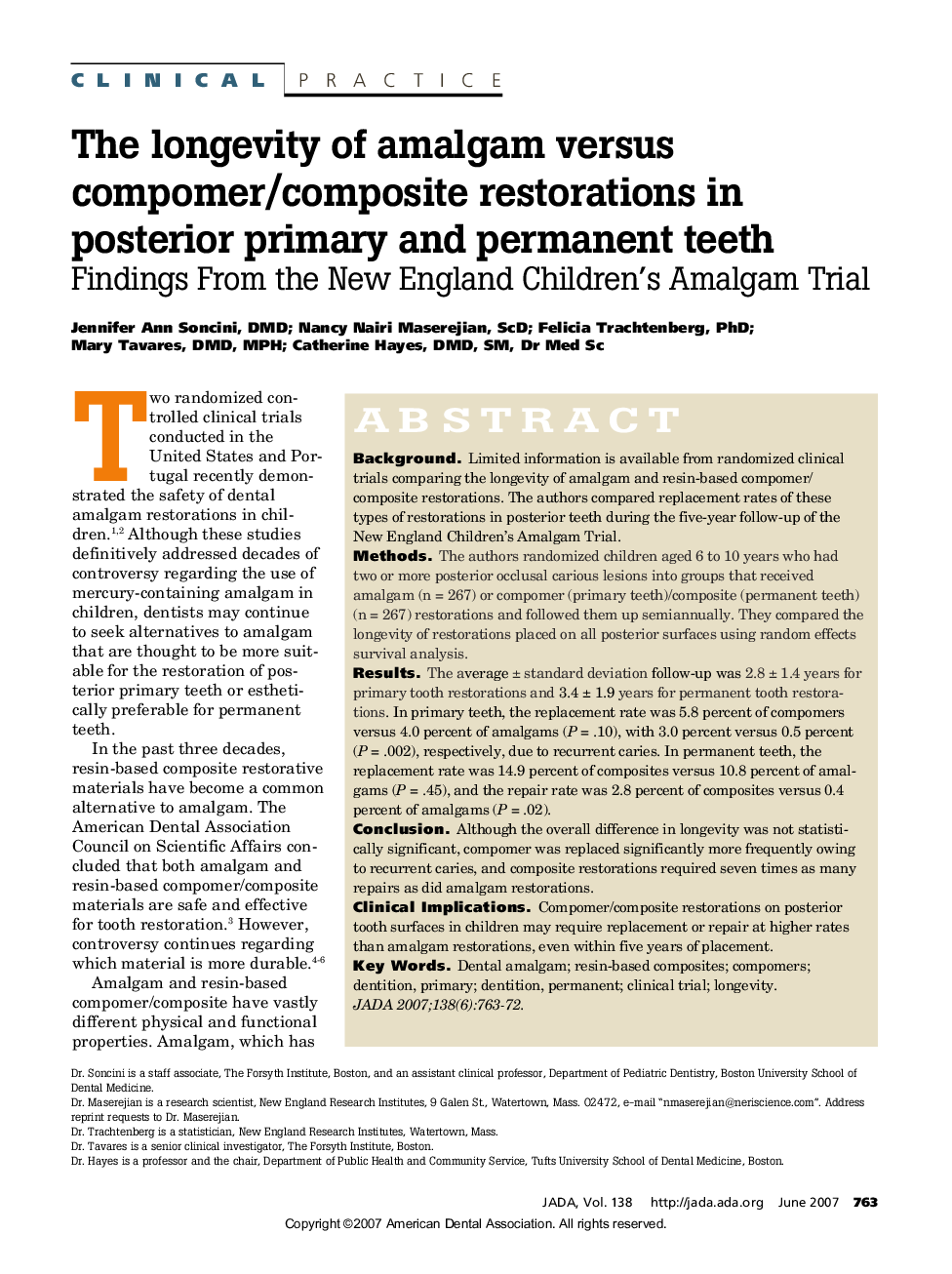| Article ID | Journal | Published Year | Pages | File Type |
|---|---|---|---|---|
| 3140465 | The Journal of the American Dental Association | 2007 | 10 Pages |
ABSTRACTBackgroundLimited information is available from randomized clinical trials comparing the longevity of amalgam and resin-based compomer/composite restorations. The authors compared replacement rates of these types of restorations in posterior teeth during the five-year follow-up of the New England Children's Amalgam Trial.MethodsThe authors randomized children aged 6 to 10 years who had two or more posterior occlusal carious lesions into groups that received amalgam (n = 267) or compomer (primary teeth)/composite (permanent teeth) (n = 267) restorations and followed them up semiannually. They compared the longevity of restorations placed on all posterior surfaces using random effects survival analysis.ResultsThe average ± standard deviation follow-up was 2.8 ± 1.4 years for primary tooth restorations and 3.4 ± 1.9 years for permanent tooth restorations. In primary teeth, the replacement rate was 5.8 percent of compomers versus 4.0 percent of amalgams (P = .10), with 3.0 percent versus 0.5 percent (P = .002), respectively, due to recurrent caries. In permanent teeth, the replacement rate was 14.9 percent of composites versus 10.8 percent of amalgams (P = .45), and the repair rate was 2.8 percent of composites versus 0.4 percent of amalgams (P = .02).ConclusionAlthough the overall difference in longevity was not statistically significant, compomer was replaced significantly more frequently owing to recurrent caries, and composite restorations required seven times as many repairs as did amalgam restorations.Clinical ImplicationsCompomer/composite restorations on posterior tooth surfaces in children may require replacement or repair at higher rates than amalgam restorations, even within five years of placement.
